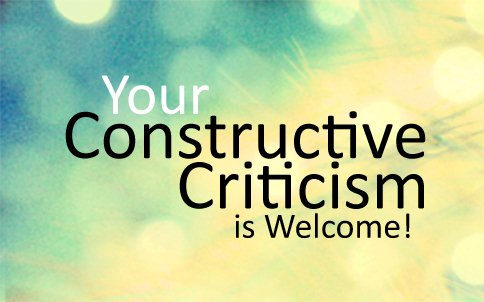Plan before you do it. Make sure you know what you want to say, and why. Have a clear path through the discussion. Leave room for questions and dialogue. Keep the conversation open and flexible, but make sure you plan to get your key points across.
Highlight some of the good work the person has done recently, goals that were met or surpassed. Emphasize positive, solid qualities that the person brings to the table.
.png)
Focus on solutions. Focus on re-emphasizing the positive, while keeping an eye on what needs to be done to improve
The goal at the end of a session like this is to leave the employee understanding the problems, and having a path towards resolving them, without feeling like crap.
Follow up can erase constructive criticism, if the person has improved and met goals. Always follow up. Even if it’s a quick compliment on a job well-done and not a formal second review. Follow up.
Discuss the person's actions, and point out what he can do to improve. Don't permit the conversation to wander in other directions, and avoid bringing up unrelated issues from the past. Focus on the subject at hand and get the proper message out.
Remember that a little empathy goes a long way. Put yourself in the shoes of the person you're about to criticize. Remember that he will feel vulnerable or under attack. Reminding yourself what that feels like will help you deliver criticism in a sensitive way.

For example: "Sue, your handling of all the processing work while John did the callbacks made for an efficient effort and showed good teamwork. Everything you did was accurate, as well. Thanks so much for helping out. Such initiative is a real value to the team."
Establish the fact that you appreciate the other person's thoughts or feelings on the subject. When the other person responds, paraphrase and repeat in your own words what you believe are the beliefs, points or concerns of the other person. Make sure that your paraphrase is stated in neutral terms, without imposing your own feelings. This will be particularly important if you do not agree with the other person's position.
Highlight some of the good work the person has done recently, goals that were met or surpassed. Emphasize positive, solid qualities that the person brings to the table.
.png)
Focus on solutions. Focus on re-emphasizing the positive, while keeping an eye on what needs to be done to improve
The goal at the end of a session like this is to leave the employee understanding the problems, and having a path towards resolving them, without feeling like crap.
Follow up can erase constructive criticism, if the person has improved and met goals. Always follow up. Even if it’s a quick compliment on a job well-done and not a formal second review. Follow up.
Discuss the person's actions, and point out what he can do to improve. Don't permit the conversation to wander in other directions, and avoid bringing up unrelated issues from the past. Focus on the subject at hand and get the proper message out.
Remember that a little empathy goes a long way. Put yourself in the shoes of the person you're about to criticize. Remember that he will feel vulnerable or under attack. Reminding yourself what that feels like will help you deliver criticism in a sensitive way.

For example: "Sue, your handling of all the processing work while John did the callbacks made for an efficient effort and showed good teamwork. Everything you did was accurate, as well. Thanks so much for helping out. Such initiative is a real value to the team."
Establish the fact that you appreciate the other person's thoughts or feelings on the subject. When the other person responds, paraphrase and repeat in your own words what you believe are the beliefs, points or concerns of the other person. Make sure that your paraphrase is stated in neutral terms, without imposing your own feelings. This will be particularly important if you do not agree with the other person's position.
